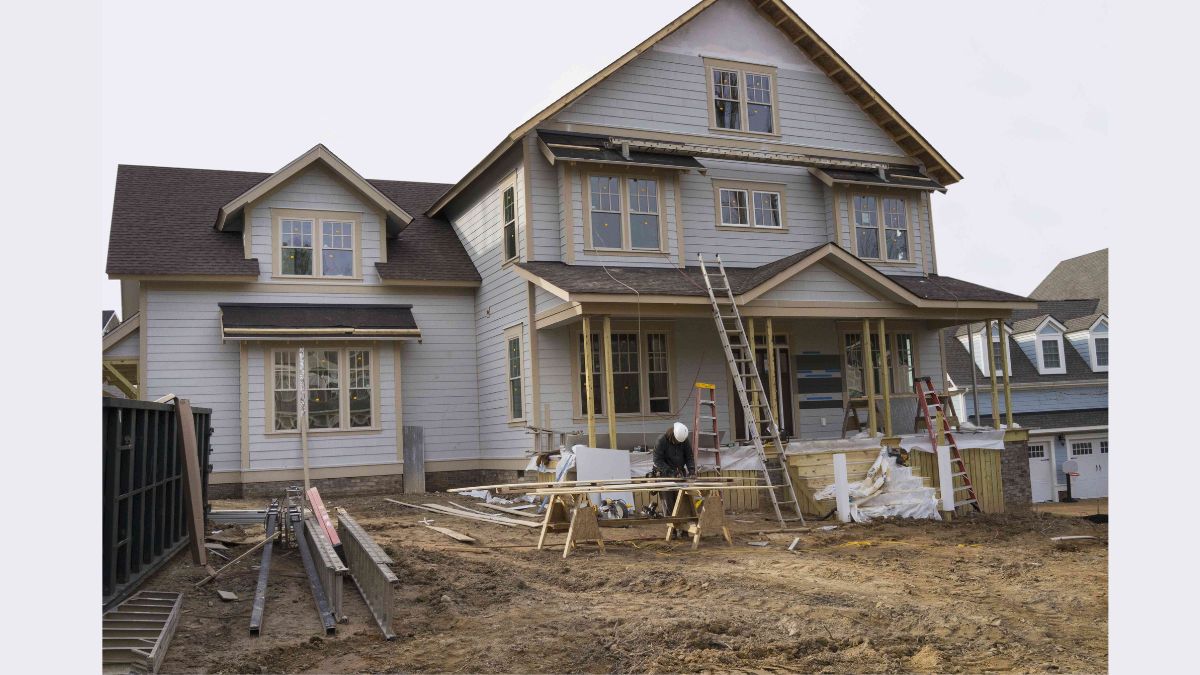Home
Transforming Spaces: The Art of Home Remodeling

Introduction to Home Remodeling
Home remodeling is not just about altering the physical aspects of a house; it transforms spaces into personalized sanctuaries that reflect the essence of those who reside in them. Engaging in a full home remodel allows homeowners to create an environment that perfectly aligns with their lifestyle and individual preferences. Whether breathing new life into a vintage, character-filled home or spicing up a modern abode that needs a bit more personality, the process can be incredibly fulfilling both functionally and emotionally. This journey of transformation calls for careful planning and creativity at every step. From conceptualization to execution, having a clear vision helps harness the potential of every space, turning bare rooms into hubs of comfort and style. Whether the focus is on updating an outdated kitchen that no longer meets current culinary demands, extending living spaces to accommodate a growing family, or converting a basement into a cozy hideaway, the possibilities are endless. Understanding the nuances of this art can make the experience not only rewarding but also invigorating.
Popular Remodeling Trends
Staying updated with the latest remodeling trends ensures that your renovated space meets modern needs and maintains a fresh and relevant appearance for years. Open floor plans that promote natural light and foster a sense of community are gaining popularity. Additionally, smart home features incorporating the latest technology for convenience and security are becoming increasingly common in remodeling projects. There’s also a growing preference for using natural materials like stone and wood to create a warm and inviting atmosphere. Furthermore, minimalist designs that focus on clean lines and functional spaces continue to rise in popularity due to their versatility and timeless elegance.
Budgeting for Your Renovation
Setting a realistic budget is a crucial step in remodeling, as it can determine whether your project is successful or becomes a financial burden. Begin by evaluating what you can afford and identifying your priorities, ensuring that essential upgrades are prioritized. Utilize technology by using dedicated budget-tracking apps to monitor your expenses closely. It’s also important to leave room for contingencies, as renovation projects often come with unexpected costs that may not have been initially considered. Additionally, exploring various financing options early on will help ensure you have the necessary resources to complete your project without added stress.
Choosing the Right Contractor
The contractor you choose becomes a crucial partner in your remodeling journey, helping bring your vision to life skillfully and precisely. When selecting a contractor, it’s crucial to vet potential candidates thoroughly. Look for someone whose past work aligns with your aesthetic preferences and who comes highly recommended by previous clients. Meetings with potential contractors should involve clear communication about expectations, timelines, and budgets. This relationship is collaborative, with many decisions requiring mutual trust and respect to achieve the desired outcome.
Sustainable Remodeling Practices
Renovating your home with sustainable methods can save money in the long run and help the environment. Choose eco-friendly materials like recycled glass, reclaimed wood, and non-toxic paints to protect the health and safety of your home’s residents. Solar power installations and energy-efficient appliances can save utility costs dramatically while also helping the environment. The U.S. Department of Energy emphasizes the significance of these advancements, which enhance air quality and lessen dependency on nonrenewable resources, creating a healthier living environment.
Common Renovation Challenges and Solutions
Renovation projects rarely go smoothly without encountering issues, but knowing and preparing for potential challenges can help you navigate pitfalls. Common problems include unexpected structural issues, delays caused by supply chain disruptions, and scope creep, where the project’s requirements unintentionally expand. A solid plan with clear goals and timelines is essential for managing these risks. Additionally, keeping communication open with your contractor allows quick action when problems arise. Flexibility, patience, and a willingness to adapt are invaluable traits throughout the remodeling process.
Tips for a Smooth Remodeling Process
Ensuring a smooth remodeling process involves detailed planning and continuous monitoring from start to finish. Begin by outlining clear objectives and making sure these are communicated effectively to all parties involved. Develop a realistic timeline and review it regularly to ensure the project remains on schedule. Engage with remodeling by periodically inspecting progress and maintaining a dialogue with workers to incorporate any necessary adjustments. This hands-on approach not only keeps the momentum going but also keeps your vision at the forefront.
Personalizing Your Space: Final Touches
As the renovation winds down, it’s time to add those personal touches that define the space as yours. Through a thoughtful selection of decor, colors, and textures, you can infuse each room with personality and warmth. Consider how lighting, art, and furnishings contribute to the overall ambiance and reflect your style. These details enhance the aesthetic appeal and provide a sense of completeness, turning a remodeled house into a welcoming, functional home. Personalizing your space goes beyond decoration; it’s about creating an environment where every detail resonates with who you are.
Home
Creative Storage Tips for Small Spaces

Maximizing space in small living areas can often feel like a daunting challenge. Limited square footage means every inch counts, making organization and clever storage solutions essential. From compact apartments to cozy studios, finding ways to store belongings efficiently without sacrificing style is key to creating a functional and comfortable home. Creative approaches, such as using vertical space, multi-purpose furniture, or hidden compartments, can transform even the tiniest spaces into well-organized, clutter-free environments.
In addition to optimizing in-home storage, some residents turn to external options to manage overflow items safely and conveniently. Utilizing services like secured storage Lodi can provide an extra layer of flexibility, allowing individuals to store seasonal items, rarely used belongings, or bulky equipment without crowding their living space. By combining smart in-home strategies with accessible external solutions, small spaces can feel larger, more organized, and better suited to everyday life, proving that limited square footage doesn’t have to limit functionality.
Embrace Vertical Storage
When it comes to maximizing space, vertical storage is a game-changer. Installing floating shelves or wall-mounted racks utilizes wall space above desks, countertops, or in hallways. Not only does this approach provide extra storage, but it can also serve as an attractive design feature when styled thoughtfully with decor or books. In small kitchens, for example, vertical spice racks or hanging utensil bars keep counters free and make cooking essentials easy to reach.
Opt for Multifunctional Furniture
Choosing pieces that do double duty is crucial in compact spaces. Consider investing in sofas with storage chaises, ottomans with lift-up lids, and beds with integrated drawers. Even dining tables with built-in shelving or convertible desks can significantly upgrade your storage game. These furnishings help maintain a clutter-free atmosphere by discreetly providing places to store daily essentials, from extra linens to tech devices, without sacrificing valuable square footage.
Utilize Over-the-Door Organizers
The often-overlooked space behind doors can serve as excellent storage territory. Over-the-door racks and organizers are perfect for pantries, bathrooms, bedrooms, and closets. Hang shoes, scarves, or cleaning supplies in one spot. Use them in bathrooms to store hair tools and personal care items. This method keeps everything accessible while preserving floors and shelves for other uses.
Incorporate Hidden Storage Solutions
Nothing beats the feeling of organizing by hiding away daily clutter in concealed spots. Many coffee tables and benches now come with lift-up tops or cubby holes, making it simple to store remotes, books, or games. In the kitchen, toe-kick drawers installed beneath lower cabinets are ideal for storing baking sheets and trivets, which often occupy valuable shelf space. Staircases can also include pull-out drawers for shoes, pet supplies, or seasonal items, optimizing every step.
Another effective approach is to store items outside the main living areas. Self-storage units, especially those with robust security, are ideal for storing off-season clothing, sports equipment, or sentimental belongings, helping you maintain a clutter-free and open living space.
Maximize Under-Bed Space
The area beneath your bed offers a significant storage opportunity that is often overlooked. Utilize flat bins or rolling drawers to store shoes, blankets, or off-season apparel. For dust-prone environments, use lidded boxes or vacuum-sealed bags to prevent dust from accumulating. Be sure to label bins for easy access when you need to retrieve specific items. This space is especially helpful in bedrooms lacking a closet or dresser.
Use Light Colors and Mirrors
Enhancing a small space isn’t just about storage—it’s also about perception. Lighter wall colors, decor, and furnishings reflect more light, expanding the room’s visual boundaries. Adding mirrors can amplify this effect, making interiors look brighter and more spacious. Placing mirrors opposite windows or in dark alcoves bounces natural sunlight, creating the illusion of extra square footage.
Implement Overhead Storage
Don’t overlook ceiling space—install racks or suspended shelves for items you don’t use daily, such as holiday decorations or rarely used kitchen equipment. Ceiling-mounted pot racks free up coveted cabinet and counter space in tiny kitchens, while garages and laundry rooms can benefit from elevated shelving for seasonal storage. Remember, accessibility and safety are key, so use sturdy mounting systems and keep a step stool handy for reaching higher items.
Customize Cabinet Interiors
Maximize the storage capacity of your cabinets by incorporating smart organization features inside them. Install pull-out drawers or sliding trays to bring items at the back into easy reach. Add shelf risers or tiered stands to double usable space. Consider door-mounted racks for cleaning products or spices. Lazy Susans are another efficient addition, especially in deep cabinets or corner units, ensuring no inch goes to waste.
Bringing It All Together
Maximizing small spaces requires a balance of creativity, strategy, and practicality. By combining vertical storage, multifunctional furniture, hidden compartments, and innovative cabinet organization with thoughtful design elements like light colors and mirrors, every inch of a home can be optimized for efficiency. External solutions add even more flexibility, allowing residents to maintain clutter-free living areas without sacrificing accessibility. With careful planning and a mix of in-home and external storage strategies, even the most compact spaces can feel open, organized, and fully functional.
Home
Energy-Efficient HVAC Innovations for Modern Homes

Introduction to Energy-Efficient HVAC Systems
As global attention shifts toward sustainable living solutions, energy-efficient HVAC systems have gained significant traction in modern home design. These systems represent a crucial technological leap to reduce energy consumption while providing the ultimate comfort experience. In regions such as Burlington, MA, homeowners are increasingly aware of such systems’ advantages. Opting for tailored air cooling services Burlington, MA, not only enhances comfort but also contributes to substantial long-term cost savings and a reduced carbon footprint.
Energy-efficient HVAC systems differ from traditional models in their technical architecture. They are equipped with advanced components designed to minimize energy usage, thus promoting an eco-friendly lifestyle. This efficiency does not come at the expense of comfort or performance. Instead, these systems are engineered to operate seamlessly, ensuring consistent indoor air quality and optimal temperature control, making them a wise choice for the environmentally conscious homeowner.
Benefits of Upgrading to Energy-Efficient Systems
Upgrading to energy-efficient HVAC systems offers numerous advantages beyond energy savings. The dramatic reduction in monthly utility bills is at the forefront, achieved through wise energy consumption. The U.S. Department of Energy highlights that energy-efficient upgrades can slash energy expenses by up to 50%, a significant reduction that alleviates financial burdens over time. However, the benefits transcend monetary savings.
Energy-efficient HVAC systems enhance indoor air quality by utilizing advanced filtration methods that eliminate pollutants and allergens, thereby improving living spaces’ overall health and comfort. This shift to improved air quality is especially advantageous for those with respiratory issues, offering a healthier, more pleasant living space. Moreover, these systems enhance asset worth, which is frequently regarded as a desirable attribute for prospective purchasers, thereby raising property value.
Key Innovations in HVAC Technology
The HVAC industry is at the forefront of technological advancement, with several groundbreaking innovations dramatically improving energy efficiency. One notable advancement is the integration of variable-speed motors. Unlike traditional models that operate at a single speed, these motors adjust their operational pace to match real-time cooling or heating demand. This intelligent adjustment reduces unnecessary energy use by operating at lower speeds during less demanding conditions, resulting in significant energy savings.
Zoning systems further enhance energy efficiency by allowing homeowners to regulate temperatures independently in different areas of their homes. This focused strategy guarantees that energy is not squandered in empty or rarely utilized areas, enhancing resource efficiency.
The absolute brilliance of these innovations lies in their ability to provide tailored comfort levels throughout the home, something that older systems cannot match.
Smart Thermostats: The Brain of Modern Systems
The advent of smart thermostats has revolutionized home climate control, serving as the intelligent core of modern HVAC systems. These devices connect seamlessly to Wi-Fi networks and utilize data-driven insights from occupancy patterns, weather forecasts, and user habits to fine-tune temperature settings automatically. This level of automation ensures that homes remain comfortable while avoiding inefficient energy use.
For homeowners who crave convenience and control, smart thermostats offer the luxury of managing heating and cooling remotely via smartphones or tablets. This capability ensures comfort when returning home and allows users to enact energy-saving adjustments dynamically, even from afar. The combination of convenience, energy efficiency, and precision makes smart thermostats indispensable to contemporary HVAC systems.
Eco-Friendly Refrigerants: A Green Perspective
The environmental repercussions of traditional refrigerants have pushed the industry toward more sustainable alternatives. Traditional refrigerants have a considerable potential for global warming and cause environmental damage when discharged into the atmosphere.
In response, newer, eco-friendly options have been developed and specifically formulated to mitigate these detrimental effects. Stringent global agreements and regulatory frameworks, such as the Kigali Amendment, drive the shift to these alternatives.
These eco-friendly refrigerants comply with environmental regulations and maintain high performance standards. As a result, users can operate their HVAC systems with peace of mind, knowing they’re minimizing ecological impact without compromising efficiency or comfort. This strategic pivot to green refrigerants is a testament to the industry’s commitment to sustainable practices.
The Role of Solar-Powered HVAC Units
The incorporation of solar energy into HVAC systems signifies a significant change in the use of renewable energy. Solar-powered HVAC systems capture the sun’s plentiful energy, providing an eco-friendly and economical option compared to traditional electric power. This advancement decreases dependence on non-renewable energy sources while also significantly lowering operating expenses, offering a combined advantage of ecological preservation and cost reduction.
As more homeowners adopt solar HVAC units, the cumulative environmental benefits become substantial. Solar integration is thus a pivotal step in the broader adoption of green technologies.
Common Misconceptions About Energy Efficiency
Despite their growing popularity, energy-efficient HVAC systems are still surrounded by several misconceptions. A prevalent myth is the perceived exorbitant initial investment required for these systems. While the upfront cost may be higher than traditional options, the consistent savings on energy bills often offset this initial outlay over time, making the investment economically viable in the long run.
Some also mistakenly believe that energy-efficient systems sacrifice performance for efficiency. However, advancements in technology have dispelled this notion. Modern energy-efficient systems are engineered to deliver superior performance while utilizing less energy. These misconceptions often stem from outdated perceptions and can be addressed through education and awareness of these systems’ benefits.
Steps to Transition to an Energy-Efficient HVAC System
Transitioning to an energy-efficient HVAC system is a methodical process that requires several key considerations. The process starts with an energy evaluation to pinpoint areas where enhancements can result in significant savings. This phase establishes a foundational comprehension, guaranteeing that investments are aimed precisely and enhancing potential advantages.
Once the assessment is complete, the next step involves researching and selecting a suitable energy-efficient model that meets the home’s specific requirements regarding size, capacity, and technological features. Collaborating with professionals for guidance during this selection process can provide insights into the best options. The final step is ensuring proper installation and regular maintenance of the system. Professional installation guarantees the system operates at its full potential, while regular maintenance ensures longevity and continued efficiency.
For homeowners, embracing energy-efficient HVAC systems represents a commitment to sustainability. They also promise enhanced comfort, reduced environmental impact, and considerable long-term savings, making the transition a sound investment in the future of home living.
Home
Aromatherapy for Modern Wellness: Everyday Uses and Evidence-Based Benefits

Introduction
Aromatherapy, a centuries-old practice of incorporating the scents and healing properties of essential oils into daily life, has experienced a resurgence as people seek natural solutions for stress, improved sleep, and mind-body balance. At its core, aromatherapy harnesses the power of plant-based essences, serving as a bridge between ancient traditions and modern science. As you consider ways to enhance your well-being naturally, exploring an aromatherapy service Sussex County DE, can unlock customized solutions for everyday wellness challenges.
Today’s hectic pace means more individuals are searching for gentle means to restore energy, focus, and calm. Essential oils, concentrated from leaves, flowers, and roots, deliver unique compounds shown to affect mood, cognition, and sleep. Whether you’re new to aromatherapy or a seasoned enthusiast, understanding both the science and practical applications of these oils can lead to more mindful, healthful routines.
Incorporating aromatherapy doesn’t require extensive knowledge—all it takes is a willingness to experiment and a commitment to safety. More people are weaving oils into their daily rituals, from morning wake-ups to evening wind-downs. Evidence now backs what ancient healers sensed: specific plant aromas can trigger profound shifts in body and mind, supporting both relaxation and alertness.
While benefits are promising, responsible use is crucial. Not all essential oils are created equal, and proper dilution is vital for avoiding irritation or other adverse effects. Consulting with professionals before starting a new wellness practice is always recommended, especially if you have underlying health concerns or are pregnant.
Understanding Aromatherapy
Essential oils are the highly concentrated extracts of flowers, leaves, bark, or roots. Their sharp and distinctive fragrances stem from various phytochemicals, each conferring different potential effects. Standard application methods include inhalation, topical use (after proper dilution), or diffusion with a dedicated device. A single drop holds the plant’s aromatic security system—compounds designed to communicate, calm, or defend against the outside world, now harnessed for human wellness.
The body’s olfactory system plays a direct role in the effects of aromatherapy. When inhaled, scent molecules travel to the limbic system, the brain center involved in emotion, memory, and motivation. This fast-acting pathway explains why essential oils can quickly alter mood or induce physical relaxation. Topical applications, meanwhile, provide local benefits and subtle aromatherapy effects as molecules absorb into the skin.

Evidence-Based Benefits
Stress Reduction
Modern research affirms that certain essential oils, such as lavender, chamomile, and bergamot, exert measurable calming effects. For example, a study in the journal Evidence-Based Complementary and Alternative Medicine found that aromatherapy can significantly reduce cortisol, the body’s primary stress hormone, after just two weeks of regular use. This reduction in the body’s stress response supports a greater sense of tranquility and lessens the burden of day-to-day anxiety.
Improved Sleep Quality
Sleep disturbances are a modern epidemic—but aromatherapy offers hope. Lavender, in particular, has been repeatedly shown to aid sleep. A systematic review published in the journal Evidence-Based Complementary and Alternative Medicine noted that inhaling lavender before bed can decrease the time it takes to fall asleep and improve overall sleep quality. This is particularly true for individuals dealing with insomnia or heightened anxiety, two groups that report meaningful improvements with consistent use.
Cognitive Enhancement
Not all essential oils are sedative—some are invigorating. Research from Northumbria University in the UK demonstrated that both rosemary and peppermint oils can enhance memory, recall, and alertness. Students and professionals alike may benefit from diffusing or inhaling these scents before cognitively demanding tasks. The scents work, in part, by stimulating neural pathways related to focus and memory.
Incorporating Aromatherapy into Daily Life
Bringing aromatherapy into your everyday routine is both flexible and accessible. Here are some popular methods:
- Diffusion: Place a few drops of your chosen oil in an ultrasonic diffuser to scent your space with calming or stimulating aromas.
- Topical Application: Mix a few drops of essential oil with a carrier oil (such as coconut or jojoba oil) and apply to pulse points, like the wrists or temples, for a lingering, personal aromatherapy experience.
- Baths: Add several drops of oil to a warm bath to combine sensory relaxation with direct skin benefits.
- Inhalation: Use a personal inhaler or inhale a drop from a tissue for a quick, portable dose of aromatherapy during the day.
Routine use, primarily targeted to specific times of day or particular wellness needs, can help build healthy aromatherapy habits and maximize long-term benefits.
Safety Considerations
Despite their natural origins, essential oils are highly potent and require careful handling. Always dilute oils before applying them to the skin, as improper use may cause irritation or allergic reactions. It’s vital to perform a patch test on a small area of skin before applying it more widely. Some oils, especially those of citrus type, can increase sensitivity to sunlight (photosensitivity) and should not be used before sun exposure.
Consult a healthcare professional if you are pregnant, breastfeeding, or have chronic health conditions. Children and pets have special considerations, as some oils may be unsafe for their use. Look for reputable brands that test for purity and avoid ingesting essential oils unless supervised by a qualified healthcare provider.
Conclusion
Aromatherapy holds promise as a practical intervention for managing stress, addressing sleep issues, and alleviating cognitive challenges in today’s busy world. Backed by research and accessible for everyday use, essential oils can enhance modern self-care routines with benefits that extend from head to toe. Mindful selection and safe practices ensure that aromatherapy remains a gentle and enjoyable addition to any wellness toolbox. With increasing interest from both the scientific and holistic communities, incorporating essential oils into daily life offers a simple and time-tested approach to enhanced well-being.
-

 GENERAL11 months ago
GENERAL11 months agoFrom Fan Art to Original Works: The Diversity of doujindesu Creations
-

 Entertainment7 months ago
Entertainment7 months agoEnchantment & Excitement: Crafting Unforgettable Event Experiences
-

 GENERAL9 months ago
GENERAL9 months agoEngland Business Visa Requirements for American and International Citizens in 2025: A Guide for Entrepreneurs
-

 GENERAL7 months ago
GENERAL7 months agoCrossword Conundrum: The Significance of vault opener nyt crossword
-

 GENERAL10 months ago
GENERAL10 months agoLatest Trends in Men’s and Women’s Jackets for the Upcoming Season
-

 GENERAL7 months ago
GENERAL7 months agoExploring the World of nhentai.nef: A Comprehensive Guide for New Users
-

 Health11 months ago
Health11 months agoDiscovering gel ooru: The Ultimate Guide to This Unique Traditional Craft
-

 GENERAL12 months ago
GENERAL12 months agoWhy raterpoint is Revolutionizing Customer Feedback
